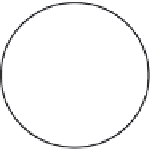Environmental Engineering Reference
In-Depth Information
FIGURE 24.1
Polluted surface sources, long transportation distances, and inadequate storage or treatment is the water situa-
tion for billions of people.
piped source, a well and pump, a ilter, or a bore hole. “Improved” does not mean the water
is safe, just that access to enough water has been improved in some way. Germs make you
sick tomorrow, toxins hurt you slowly and permanently, and both must be removed for
water to be safe (Figure 24.2). However, the solutions provided by UN organizations and
almost every other aid organization and government agency are aimed either at improv-
ing access to water or partial disinfection. Toxins are often not measured, and the solu-
tions provided do not remove them. The majority of the world, >4 billion people by some
calculations, do not have access to safe water, where toxins and germs are removed, and
that number is increasing, even in places like the United States. Providing municipal treat-
ment systems to urban communities in the world is not working, and it will not work
going forward. New solutions aimed at providing safe drinking water for everyone must
be developed.
A number of technologies, mostly highly reined versions of 19th and 20th century inven-
tions, are in use to remove contaminants from drinking water, including iltration, reverse
osmosis (RO), germicidal lamps, chlorination, and ozonation. However, there are >1000
new industrial contaminants introduced into the environment each year, mostly new
organic chemical compounds, as shown in Figure 24.3, which were not conceived when
Access
Germs
Safe
Toxins
FIGURE 24.2
For water to be safe,
a person must have access to enough water, it must be disinfected of germs, and detoxiied
of chemical and naturally occurring toxins.














